In Episode 1, "Let's Get Technical Conformity," I introduced why technical conformity is necessary and where to get certified. However, in order to acquire technical conformity, it is necessary to prepare many things such as software for testing and documents related to wireless equipment to be acquired.
Items to be prepared can be roughly classified into the following three points.
- Documents such as design information of radio equipment subject to application
- Specifications of the antenna to be applied for
- Software and hardware for testing
This time, we will explain how we prepared materials such as the design information of the radio equipment to be applied for and the specifications of the antenna to be applied for.
*The software and hardware for testing will be introduced in Part 3.
The road to technical standard conformity certification Episode 1 "Let's get technical standards"
The Road to Technical Regulations Conformity Certification Episode 2 "Preparing Documents"
The Road to Acquiring Technical Standards Conformity Certification Episode 3 “Examination”
Prepare the documents necessary for the technical suitability application
A lot of documents are required to apply for technical suitability. For example, we have to prepare materials such as block diagrams and layout diagrams of radio equipment, including application forms that describe application details.
This was the first time for us to acquire the technical suit, so we were in a situation where we didn't know what to do, but we were able to prepare all the necessary documents with the support of TÜV Rheinland Japan K.K. Below is a list of the minimum required documents.
| No. | Document | No. | Document |
| 1 | application form | 6 | Explanatory material explaining that the structure cannot be opened easily |
| 2 | Wireless equipment system diagram (block diagram) | 7 | antenna datasheet |
| 3 | Construction specifications | 8 | Label placement diagram |
| 4 | parts layout | 9 | serial number list |
| 5 | general view | 10 | Datasheets of key ICs |
Here are just a few of the materials we have prepared.
parts layout
As for the parts layout diagram, the following materials were prepared because photos of the main parts such as the crystal oscillator, memory, and CPU were requested. In this way, it is a material that explains what kind of things are placed where on the board.
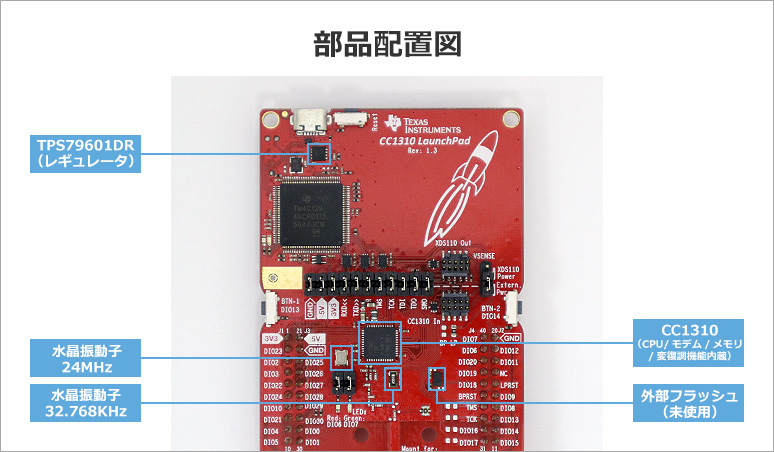
Label placement diagram
This time, in order to apply for a "technical standard conformity certification" that certifies the performance of each radio equipment individually, it is necessary for TÜV Rheinland Japan Co., Ltd. to attach a label to the radio equipment after certification. I have. For this reason, we have prepared a material called a label placement diagram that specifies the label paste position.
The label attached in the figure below is a sample label obtained in advance from TÜV Rheinland Japan Co., Ltd. and attached.
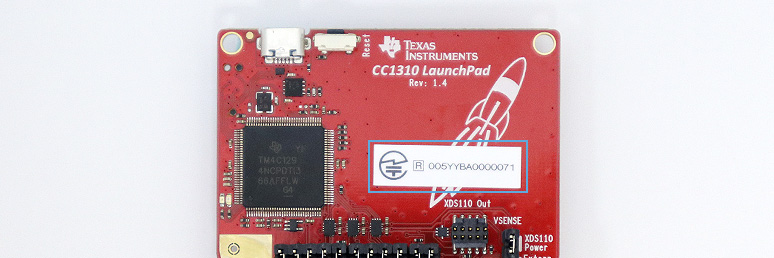
If construction design certification is to be obtained, the certification holder will need to prepare and affix labels, so label drawings and label layout drawings are required as documents to be submitted.
Antenna datasheet must be prepared by the applicant
Antennas are an integral part of any wireless product. Therefore, information such as the gain and radiation pattern of the antenna to be applied for is required even when acquiring technical conformity. In addition, it is necessary to obtain this information for all antennas to be applied.
You can apply for any number of antennas. This time, I decided to apply for a total of 8 types of antennas in order to check the differences in antenna characteristics.
4 types from TI, 4 types from Taoglas, total 8 types of antennas applied
We applied for a total of 4 types of antenna kit (CC-ANTENNA-DK2) released by Texas Instruments (hereafter referred to as TI) and the pattern antenna on LAUNCHXL-CC1310, which has acquired technical conformity.
By the way, this CC-ANTENNA-DK2 comes with 16 antennas, including PCB antenna, helical antenna, chip antenna, dual band antenna combining 868/915MHz and 2.4GHz, and can operate from 169MHz to 2.4GHz. corresponds to the frequency of
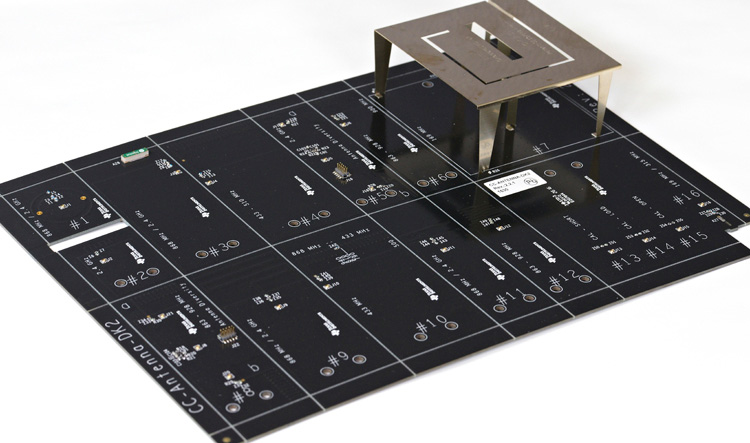
We also applied for four types of antennas from Taoglas, for which Macnica is a sales agent. The types of antennas we applied for and links to the product pages are below.

FW.95.B.SMA.M
Purchase here (Macnica-Mouser site)
TI.09.A.0111
Purchase here (Macnica-Mouser site)
TI.16.5F11
Purchase here (Macnica-Mouser site)
TI.19.2113
The antenna to apply for has been decided, but there is a problem...
After deciding which antenna to apply for, all I had to do was prepare the documents, but there was one problem.
Information on the gain and radiation pattern at the frequency to obtain technical conformity is required, but TI did not provide such documents for the adopted antenna.
Therefore, we asked SGS Japan Co., Ltd., which provides a service to measure antenna characteristics, to obtain the missing antenna characteristics information.
Get antenna characteristics information from SGS Japan!
The antenna characteristics test was conducted at SGS Japan Co., Ltd.'s Yokohama Laboratory.
The photo shows the anechoic chamber of SGS Japan Co., Ltd.'s Yokohama Laboratory, where the characteristics of the antenna were measured. We installed the antenna on the styrofoam shown in the front of the photo on the left and carried out the measurement. As you can see from the photos below, the anechoic chamber was quite large.
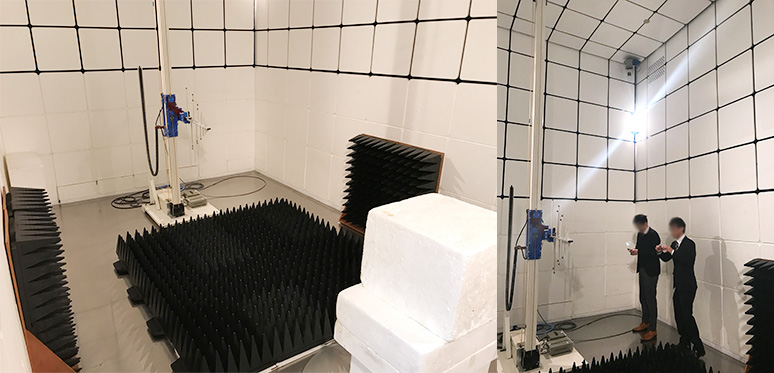
The gain and radiation pattern of the antenna were measured while switching the frequency and XYZ coordinates, and as a result, we were able to obtain the characteristic information of the antenna necessary for the application, such as the radio wave radiation pattern diagram shown in the photo below. .
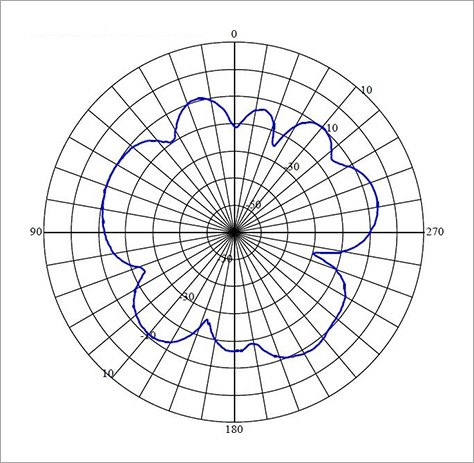
In the final episode, we will have a skill test!
Now you have all the documents you need to apply for a license.
Next time, in the 3rd episode "Examination", we will deliver the hardware and software prepared for the examination and the state of the examination at TUV Rheinland Japan Co., Ltd.!
Contact Us
If you are looking for detailed information on TI's development kits introduced in this article or Sub-GHz compatible products, please contact us here.
Related information
Click here for recommended articles/materials
The road to technical standard conformity certification Episode 1 "Let's get technical standards"
The Road to Technical Regulations Conformity Certification Episode 2 "Preparing Documents"
The Road to Acquiring Technical Standards Conformity Certification Episode 3 “Examination”
I tried to measure the flight distance of Sub-GHz band wireless communication Part 1 "Let's try it first"
I tried to measure the flying distance of Sub-GHz band wireless communication Part 2 "Improved and challenged 2 km"
Click here for recommended seminars/workshops
Wireless Seminar for Beginners - First wireless product starting with TI - <free>
Click here to purchase products
LAUNCHXL-CC1310
*Since this evaluation board has not acquired domestic technical certification, please use it at your own discretion.
CC-ANTENNA-DK2
FW.95.B.SMA.M
TI.09.A.0111
TI.16.5F11
TI.19.2113
Click here for manufacturer site/other related links
Taoglas Official Site
CC1310
LAUNCHXL-CC1310
SimpleLink™ Sub-1GHz Wireless MCU

